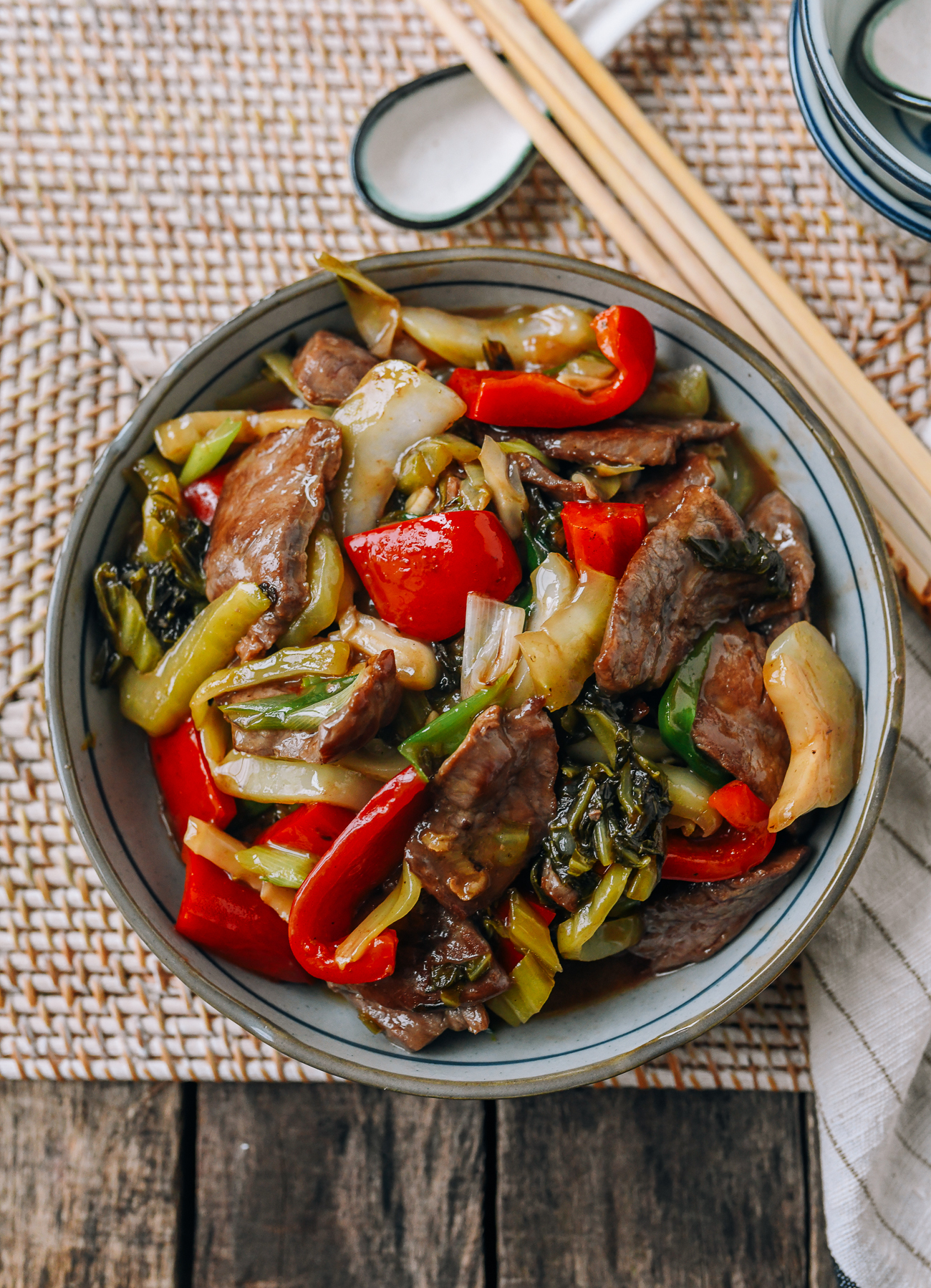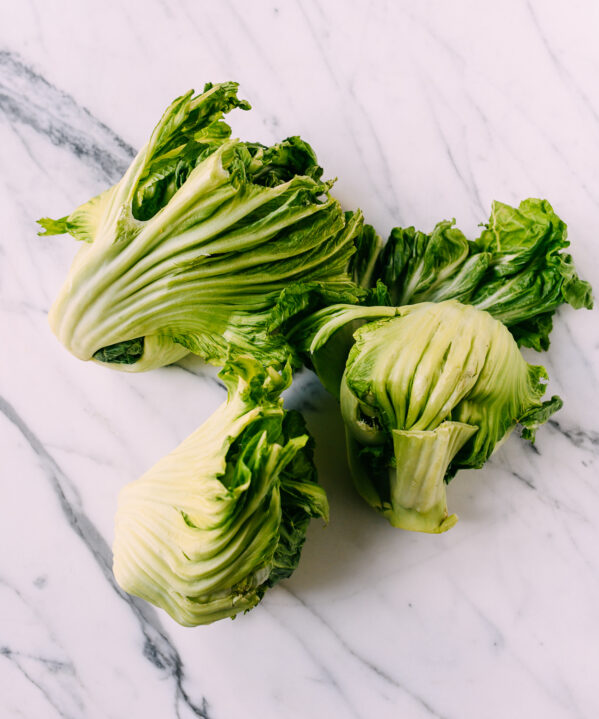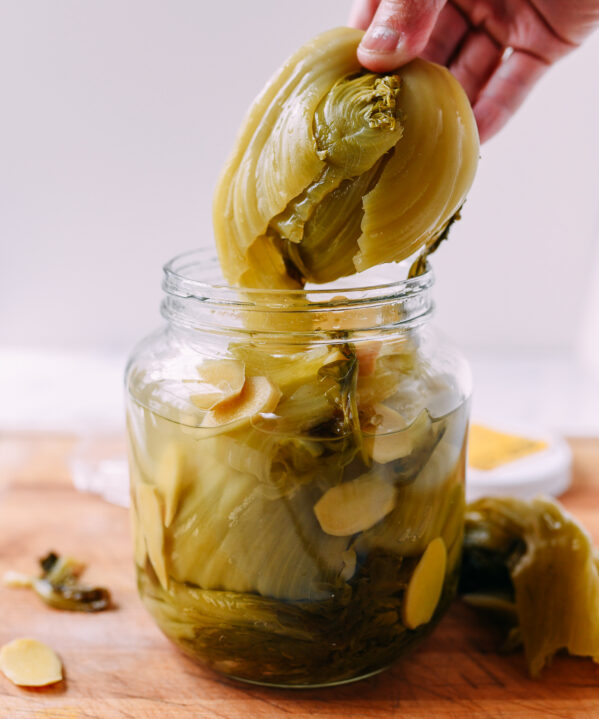Beef and Pickled Mustard Greens is Cantonese home-cooked comfort food. Haam choy, sweet bell peppers, and melt-in-your-mouth velveted beef make for a simple, quick, yet delicious recipe.
Homemade Pickled Mustard Greens
Although you can buy neatly vacuum-packed pickled mustard greens at your local Chinese grocery store, my family has always made it at home.
My grandma’s favorite dish for haam choy is fresh chicken with pickled mustard greens–but it has to be made with her own haam choy recipe! Others simply don’t measure up.
That’s why we documented her full haam choy recipe, so now all of our family and friends can make it at home. If you use store-bought vacuum-packed haam choy, you’ll want to give it a good rinse and also taste it because it is much saltier than homemade.
My mom also used to buy big heads of mustard greens to make gallons of haam choy at home. She used beef as often as chicken to make a delicious, 100% homemade stir-fry.
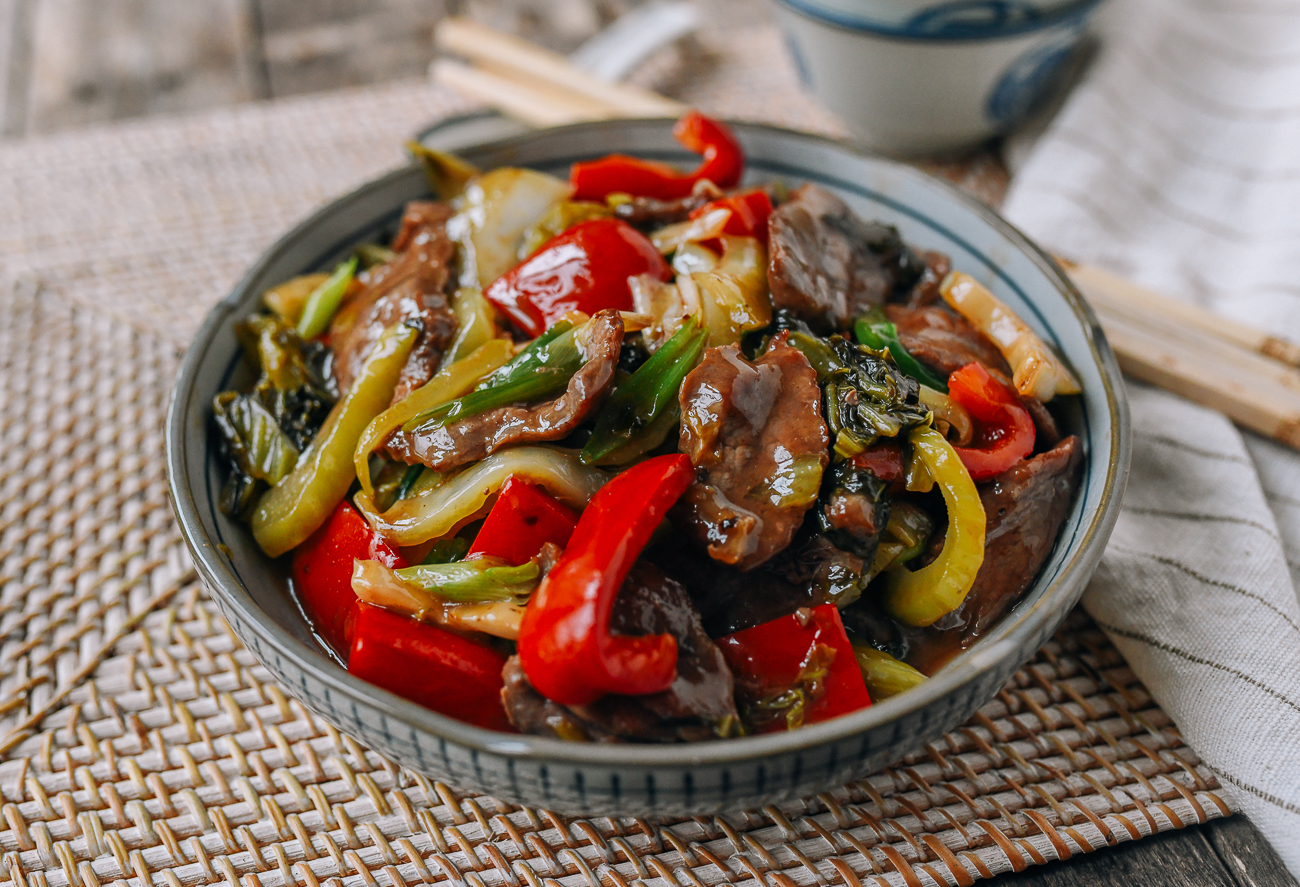
Salty, briny, and just a little bit sweet
We call these pickled mustard greens haam choy, which means “salted vegetable.” But, in fact, my grandma’s recipe calls for salt, sugar, vinegar, and plenty of fresh ginger in the brine.
If you consider yourself a pickle connoisseur, you have got to try this recipe!
As for me, I always love a good beef stir fry, so when I get tired of the usual suspects (like Beef and Broccoli or Beef and Tofu), we turn to this Beef and Haam Choy.
Recipe Instructions
Place the beef slices into a bowl with the cornstarch, baking soda, water, oyster sauce, and vegetable oil. Mix until thoroughly combined. Set aside for at least 30 minutes, or even overnight.
Meanwhile, prepare the ginger, pickled mustard greens, garlic, scallions, and bell pepper.
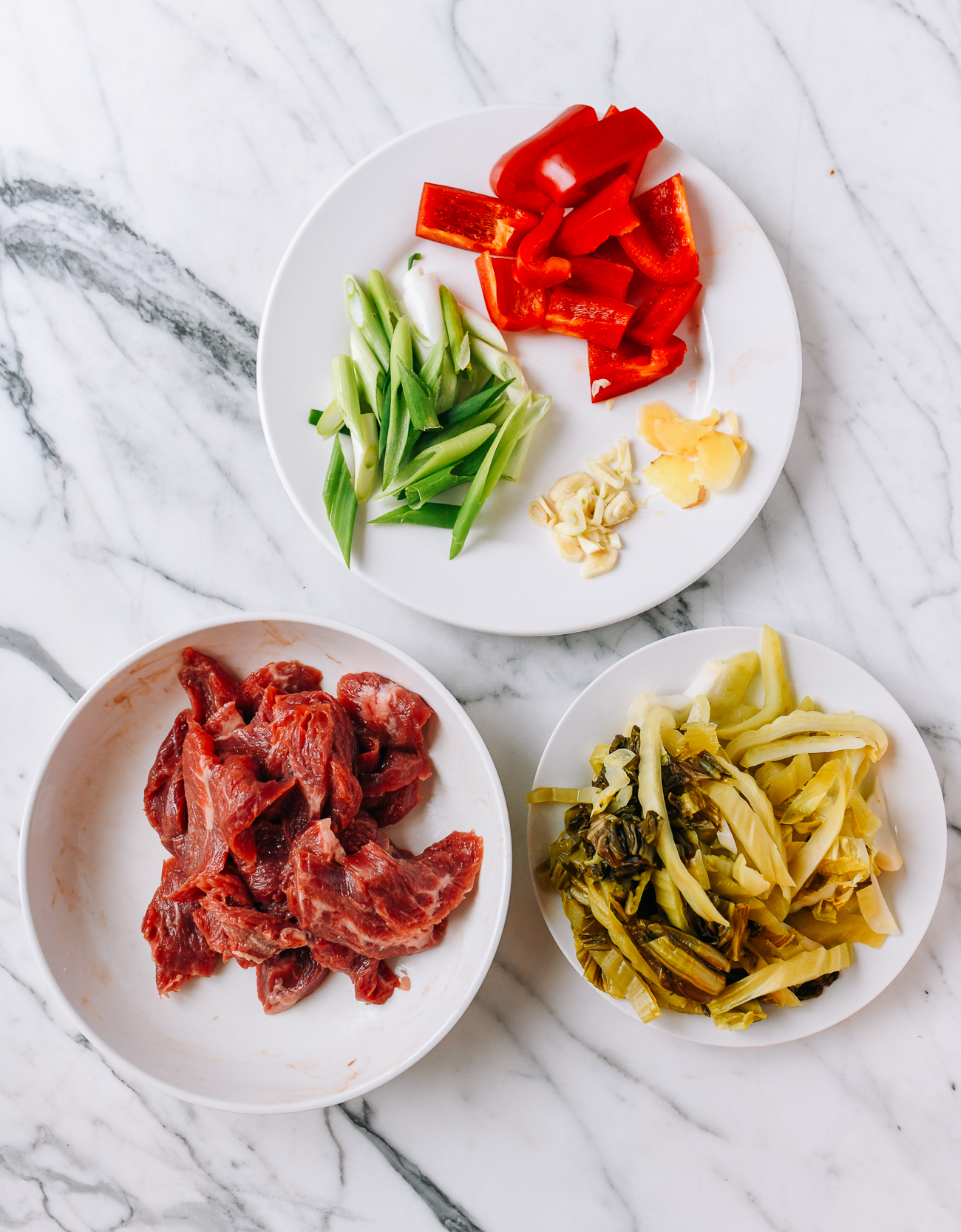
Also, mix the sauce by combining the chicken stock, sugar, white pepper, oyster sauce, light soy sauce, and sesame oil, and set aside.
Heat your wok until it just begins to smoke, and spread 2 tablespoons of vegetable oil around the perimeter of the wok. Add the beef to the wok, spreading it in a single layer.
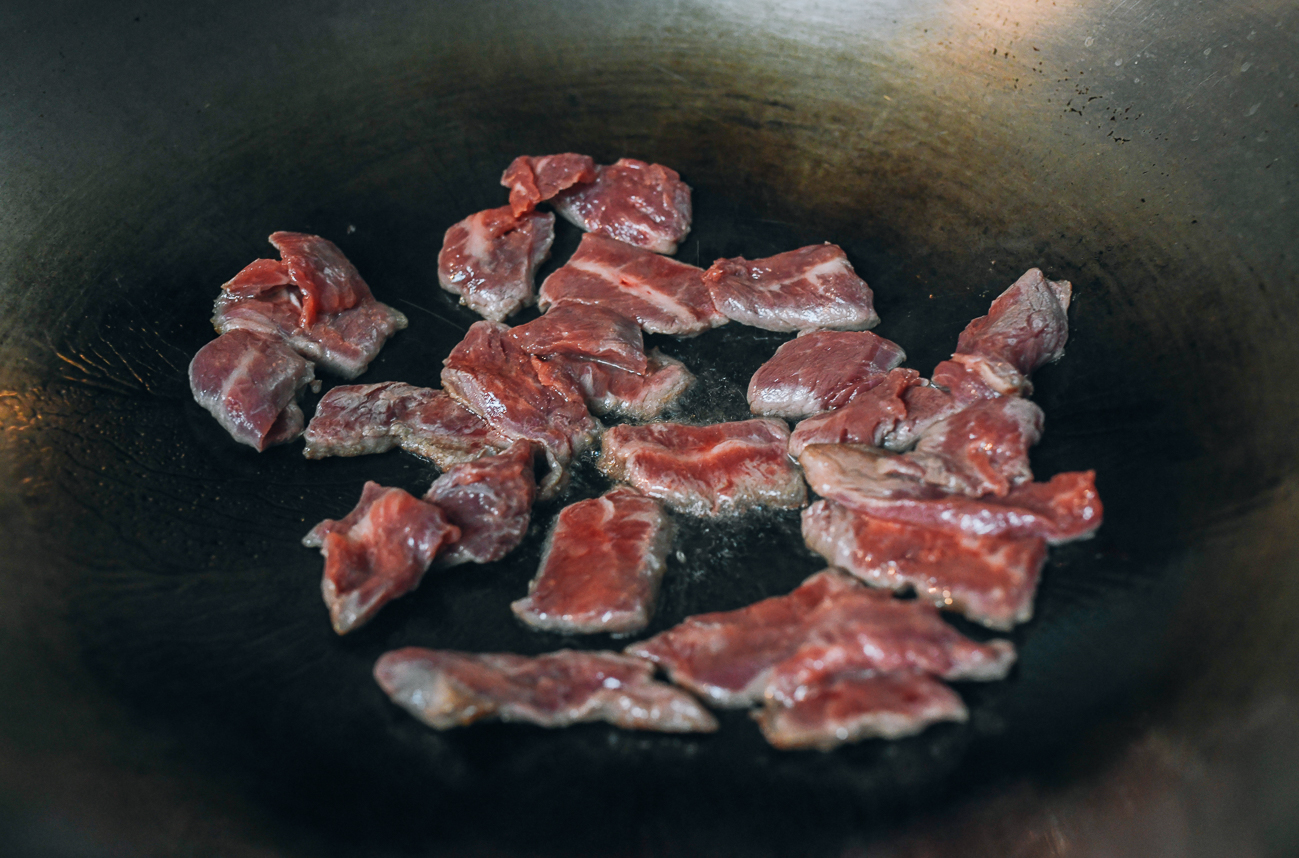
Sear the meat for 1 minute on each side. Remove the beef from the wok, leaving any oil behind, and set aside.
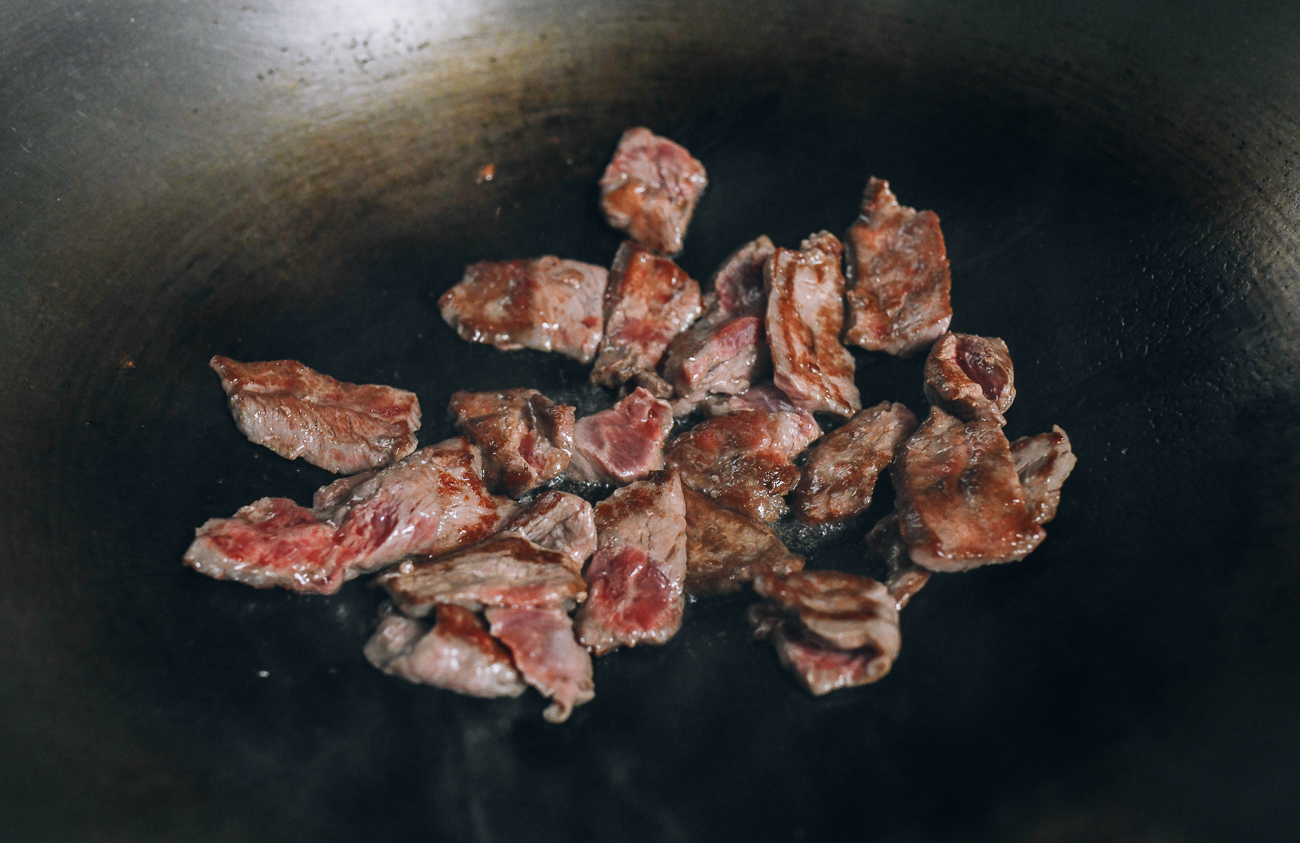
Next, set the wok to medium heat, and add another tablespoon of oil, along with the smashed ginger.
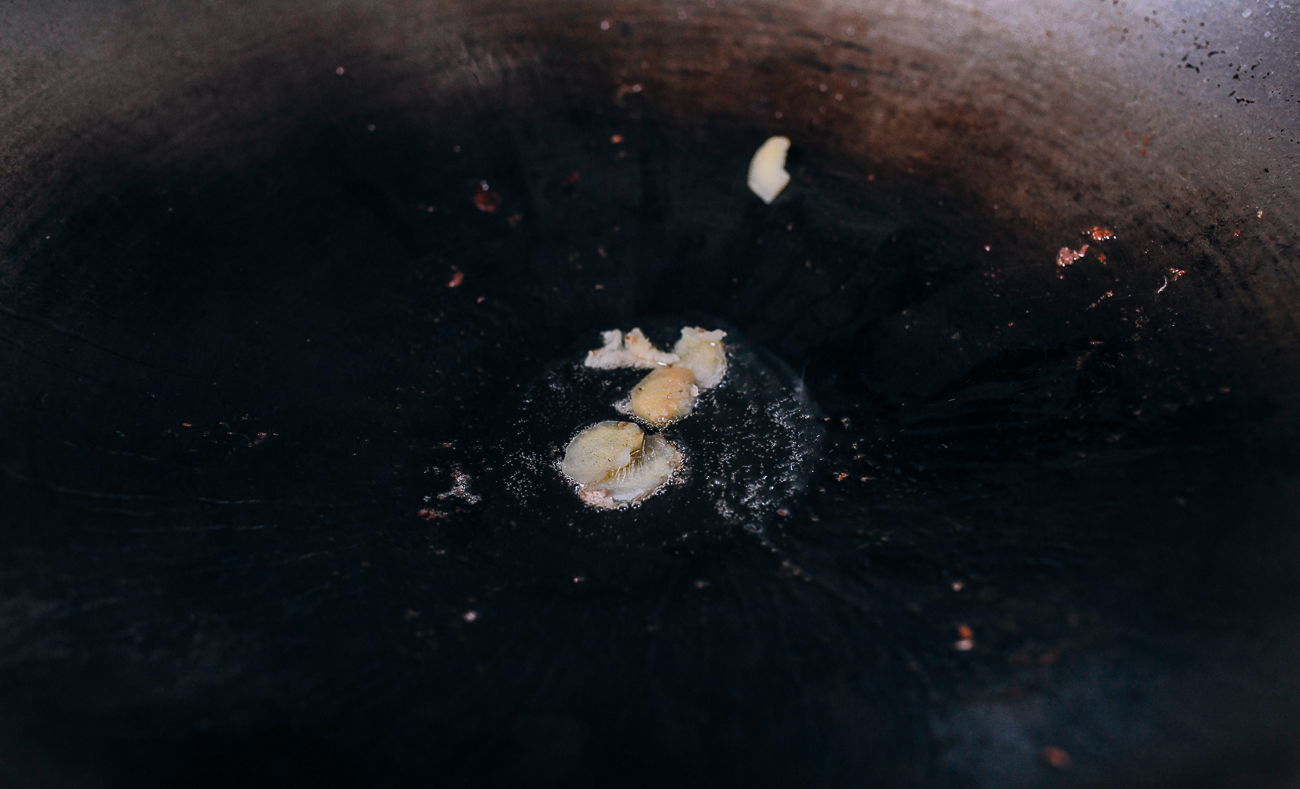
After 15 seconds, add the pickled mustard greens.
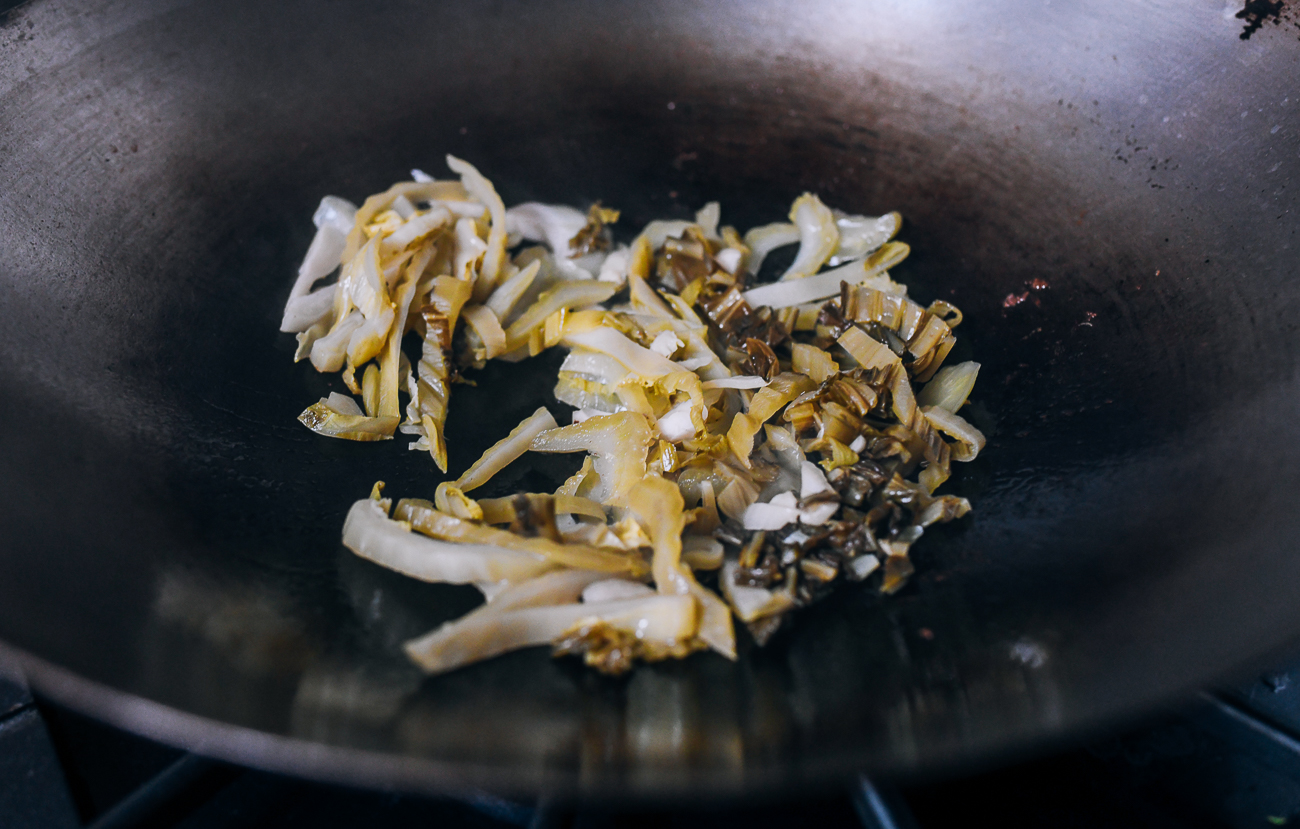
Stir-fry for 30 seconds, until the greens are seared and slightly dry.
Increase the heat to high, and add the garlic…
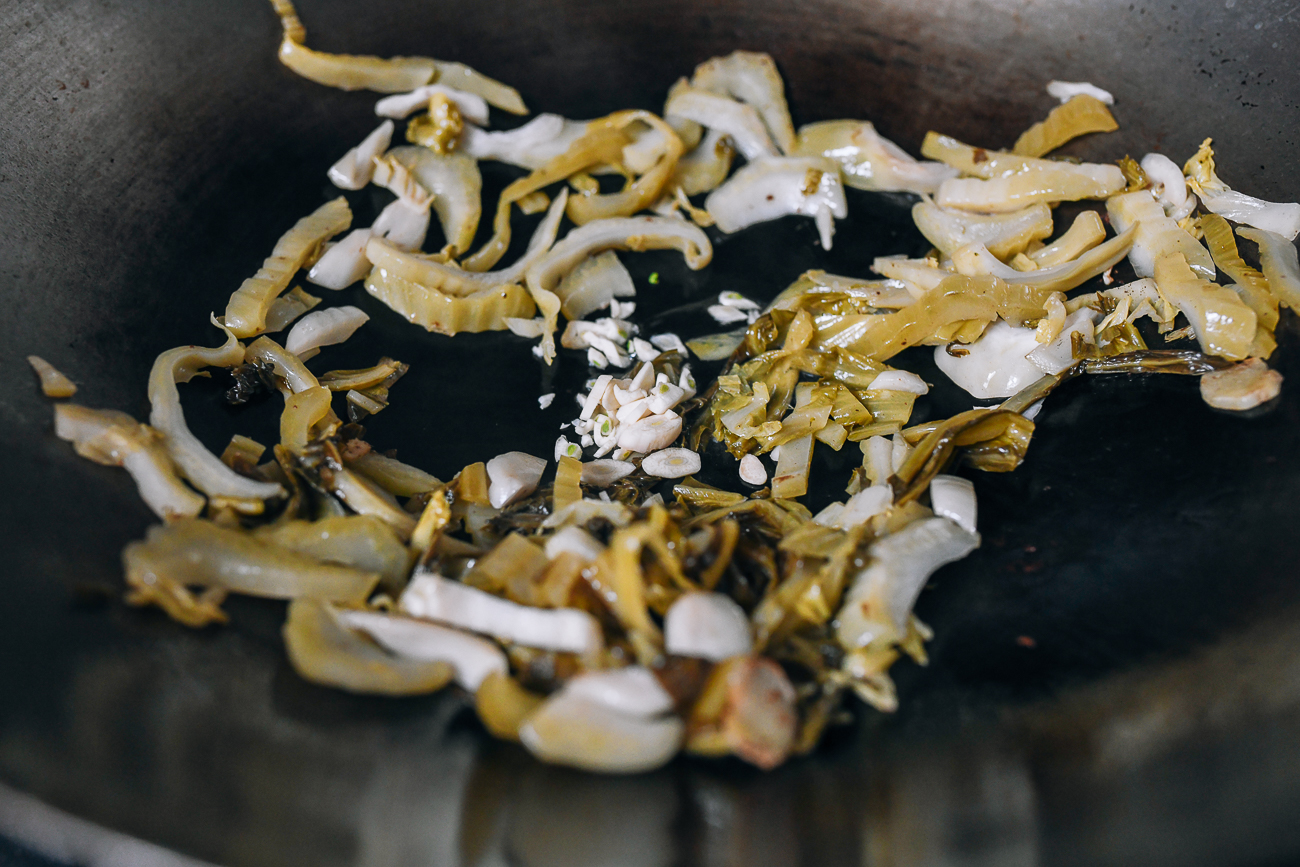
…and the white parts of the scallions and red bell peppers. (We also added the green parts of the scallions at this stage, but they’re better added later, which is why we tweaked the recipe instructions to reflect that!) Stir-fry for another minute.

Add the Shaoxing wine around the perimeter of the wok to deglaze it, and stir everything together for another 30 seconds.
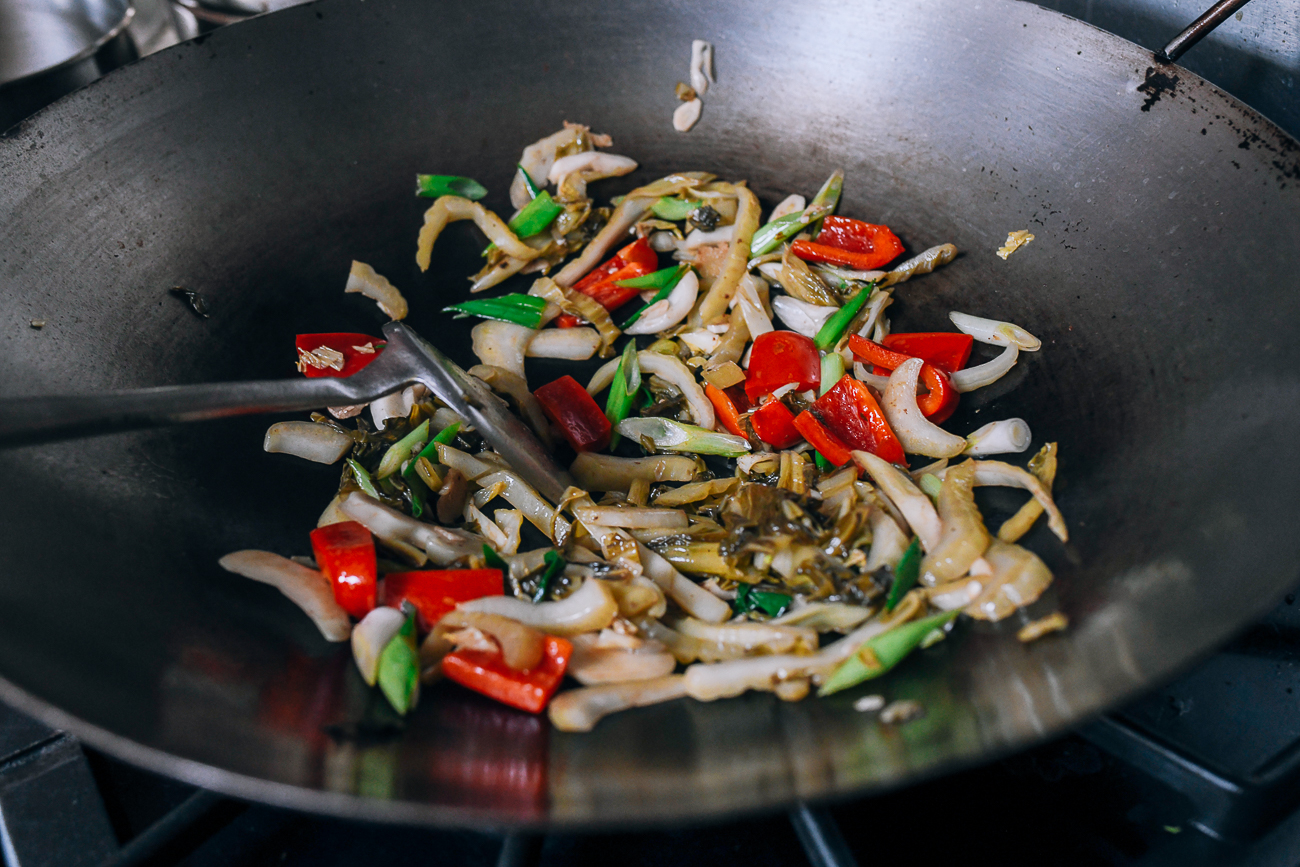
Stir up the prepared sauce mixture and add it to the wok.
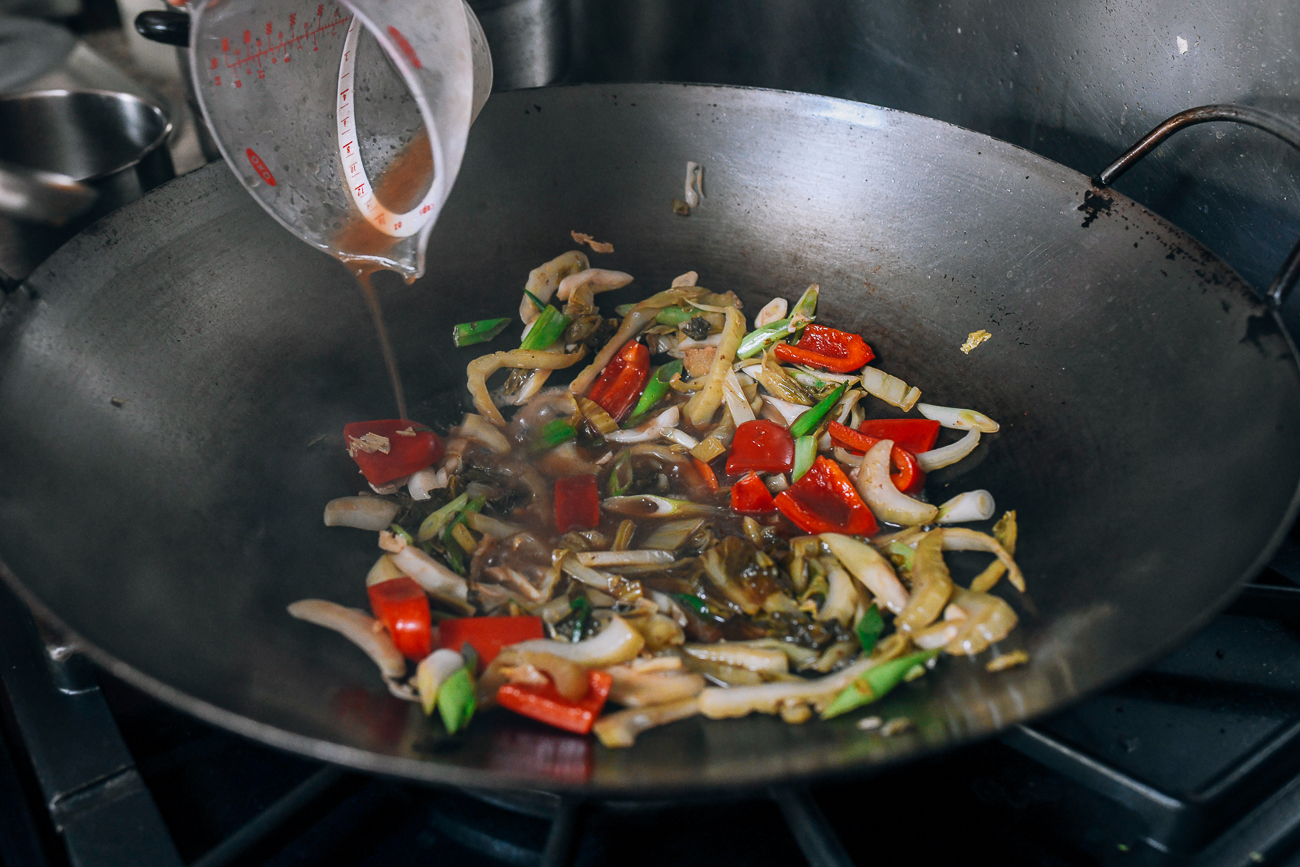
Mix everything together until combined. Then push all of the ingredients to the middle of the wok. Cook for 1 to 2 minutes, or until the liquid comes to a simmer.
Add the seared beef—along with all of the juice that has collected in the bowl––and the green parts of the scallions. Cook for another 30 seconds.
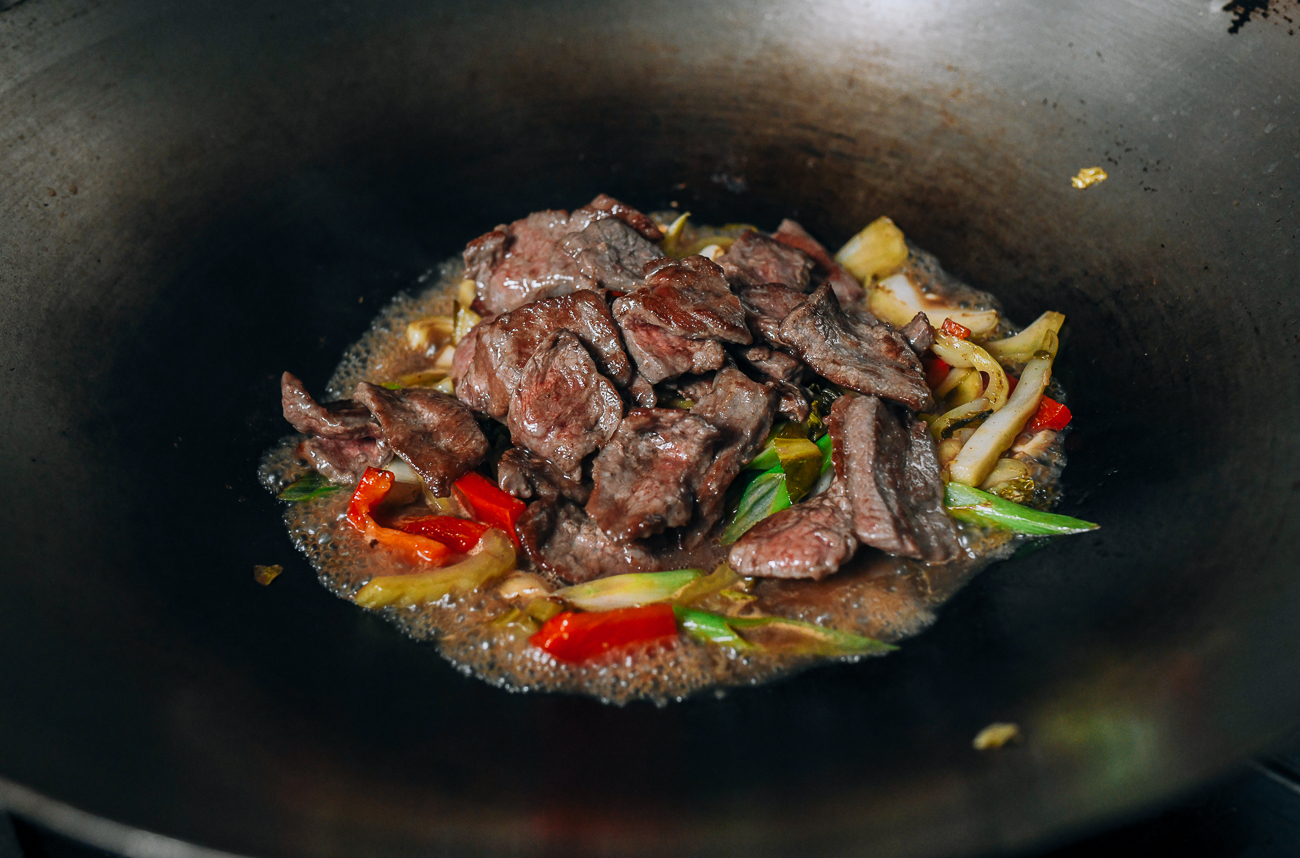
Add enough of the cornstarch slurry to thicken the sauce. You don’t have to use it all, and you should go by your personal preference and taste.
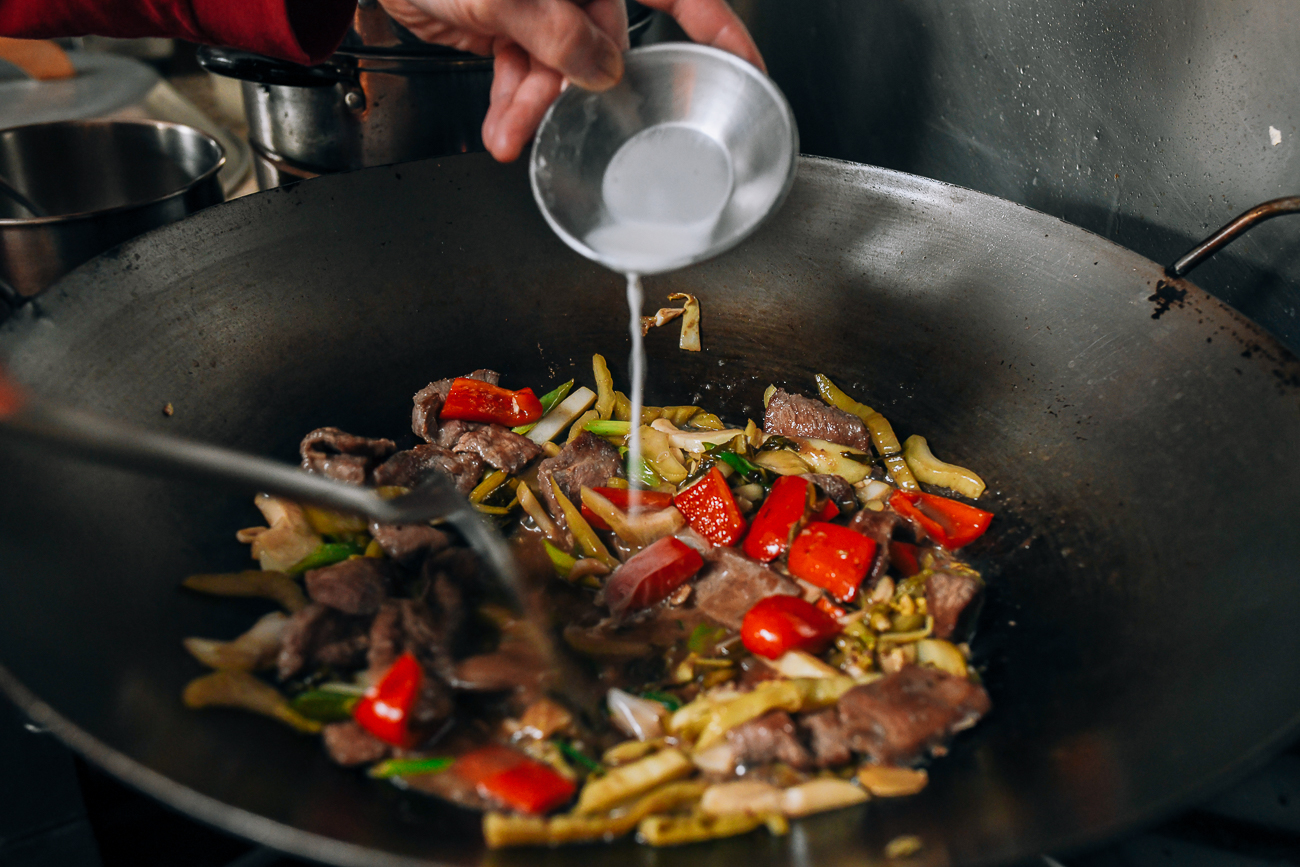
Stir for 20-30 seconds. Plate and serve with steamed rice.
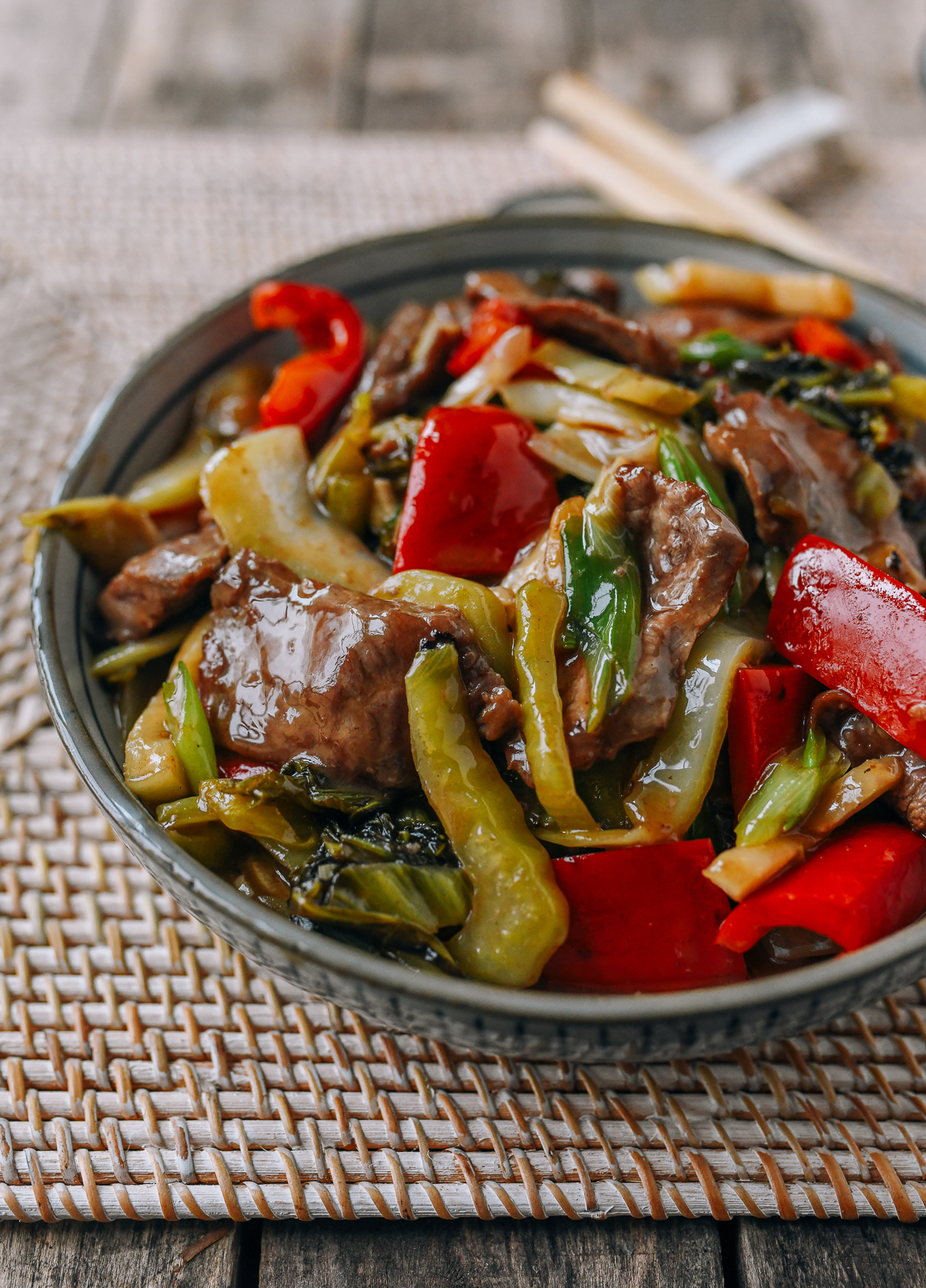
Beef and Pickled Mustard Greens (Haam Choy)
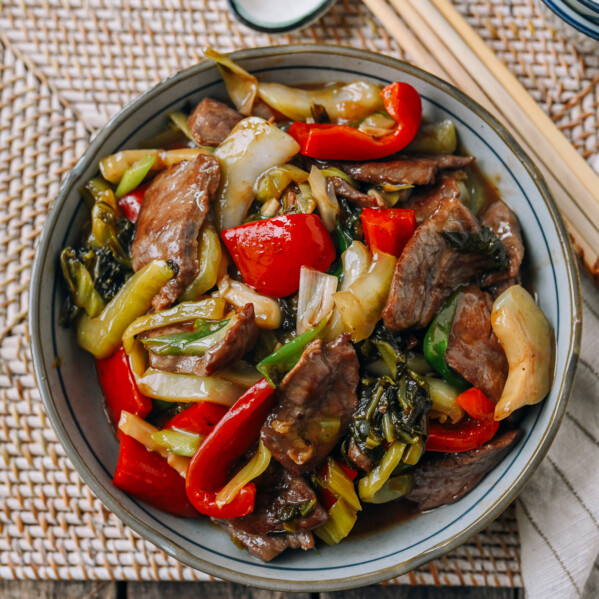
Ingredients
For the beef and marinade:
- 12 ounces flank steak (thinly sliced against the grain)
- 1 teaspoon cornstarch
- 1/8 teaspoon baking soda
- 2 tablespoons water
- 2 teaspoons oyster sauce
- 1 teaspoon vegetable oil
For the rest of the dish:
- 3-4 slices ginger (sliced 1/4-inch thick, and smashed with a cleaver)
- 8 ounces pickled mustard greens (haam choy) cut into 1/2-inch by 1 -inch strips
- 2 cloves garlic (sliced)
- 2 scallions (cut at an angle into 1 1/2 inch pieces, white pieces smashed and green parts cut into 2-inch lengths)
- 1/2 cup red bell pepper (cut into bite-sized pieces)
- 2/3 cup chicken stock
- 1/2 teaspoon sugar
- 1/8 teaspoon white pepper
- 1 tablespoon oyster sauce
- 1 teaspoon light soy sauce
- 1/4 teaspoon sesame oil
- 3 tablespoons vegetable oil (divided)
- 2 teaspoons Shaoxing wine
- 1 1/2 teaspoons cornstarch (mixed into a slurry with 1 tablespoon water)
Instructions
- Place the beef slices into a bowl with the cornstarch, baking soda, water, oyster sauce, and vegetable oil. Mix until thoroughly combined. Set aside for at least 30 minutes, or even overnight.
- Meanwhile, prepare the ginger, pickled mustard greens, garlic, scallions, and bell pepper. Also, mix the sauce by combining the chicken stock, sugar, white pepper, oyster sauce, light soy sauce, and sesame oil, and set aside.
- Heat your wok until it just begins to smoke, and spread 2 tablespoons of vegetable oil around the perimeter of the wok. Add the beef to the wok, spreading it in a single layer. Sear the meat for 1 minute on each side. Remove the beef from the wok, leaving any oil behind, and set aside.
- Next, set the wok to medium heat, and add another tablespoon of oil, along with the smashed ginger. After 15 seconds, add the pickled mustard greens, and stir-fry for 30 seconds, until the greens are seared and slightly dry.
- Increase the heat to high, and add the smashed garlic, white parts of the scallions, and red bell peppers. Stir-fry for another minute.
- Add the Shaoxing wine around the perimeter of the wok to deglaze it, and stir everything together for another 30 seconds.
- Stir up the prepared sauce mixture and add it to the wok, mixing everything together until combined. Then push all of the ingredients to the middle of the wok and cook for 1 to 2 minutes, or until the liquid comes to a simmer.
- Add the seared beef—along with all of the juice that has collected in the bowl––and the green parts of the scallions. Cook for another 30 seconds.
- Add enough of the cornstarch slurry to thicken the sauce (you don’t have to use it all, and you should go by your personal preference and taste). Stir for 20-30 seconds. Plate and serve with steamed rice.
